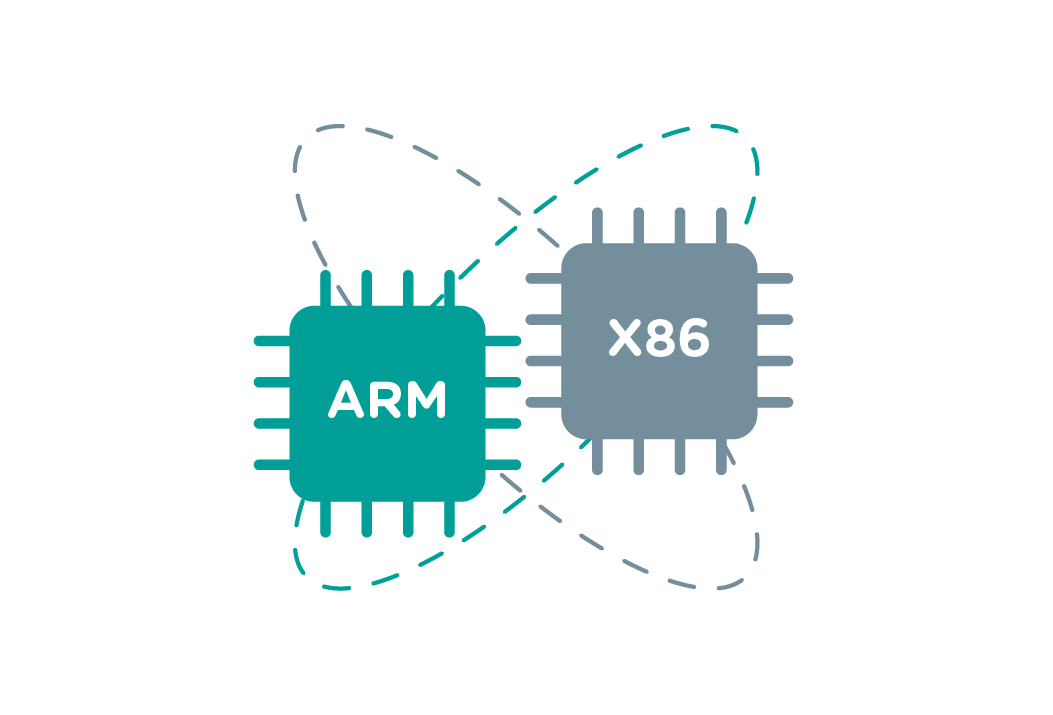
Choosing the best processor between ARM and x86 is not an easy task.
There are many factors to take in account and opinions change according to the context and the specific needs. Especially when it’s about industrial applications.
Innovation is the foundation of ESA Automation’s activity, as well as promoting technological development in industrial automation. Therefore, in this article we want to help you to understand which is the best processor according to your application and what are the differences between ARM and x86 processors.
What are the ARM and x86 processors?
Let’s start by defining what the ARM and x86 processors are. So it will be easier to understand a differences between the two architectures.
ARM processors (Advanced RISC Machine) are a family of RISC processors for embedded systems. Developed by ARM Holdings, they are mostly known on the mobile market, thanks to their efficiency that perfectly suits mobile devices, such as smartphones.
The x86 architecture, on the other hand, identifies a family of CISC microprocessors produced by Intel. Opposite to ARM processors, this type is more suited for fixed machines, like desktops.
Which is the difference between ARM and x86 processors?
ARM and x86 architecture: what does it change?
In regard to industrial PCs, these two categories of processors are very common. But what is the difference between them?
In short, the ARM architecture is a close platform. First, this means that it’s not possible to install different types of applications. However, less freedom also means more safety, since there is no place for potential problems.
Since with this kind of architecture the Operative System is usually uploaded each time at the startup, it is easy to understand that a simple restart is enough to solve any possible mistake, going back to the original system settings. Therefore, you cannot create irreversible disasters.
On the other hand, the closeness of the architecture doesn’t allow users to expand it.
X86 processors are different. In fact, you are free to install whatever you want, but with more risks. In this case, problems might occur, making the system unusable.
In conclusion, the ARM architecture can be considered more linear and simple (and therefore more efficient). It allows you to execute a set of instructions in less time.
On the contrary, x86 processors implicate extended sets of instructions, with complex directives. However, this is also the reason why they can manage more data.
Here’s some pros and cons to help you choosing the best processor.
Pros and cons of ARM processors
- Pro: with ARM, the system is not corruptible.
- Con: they limit the user, since they are not expandable.
- Pro: less consumption.
- Con: limited calculation capacity.
- Pro: ARM architecture is ideal for embedded devices.
Pros and cons of x86 processors
- Pro: top in terms of system configurability and expandability
- Con: the system can be compromised permanently.
- Pro: they offer more powerful performances.
- Con: they consume more and they generate more heat.
- Pro: x86 processors are the leader on the desktop and notebook market.
Has this information helped you to choose the best processor?
Follow our blog to get the latest updates on industrial automation and on ESA Automation solutions.

